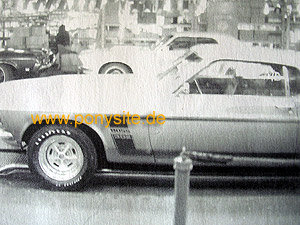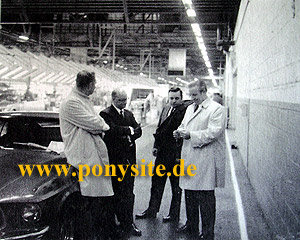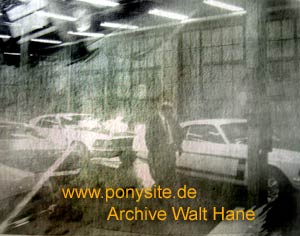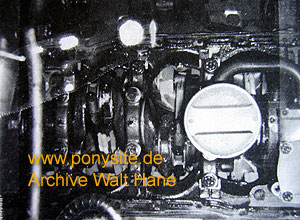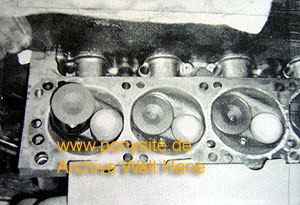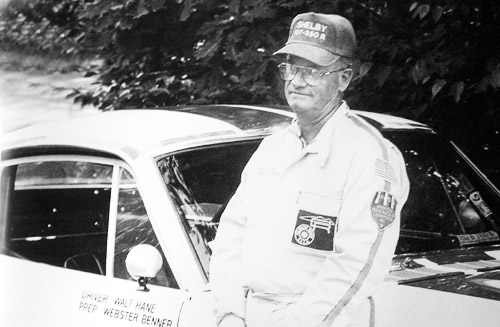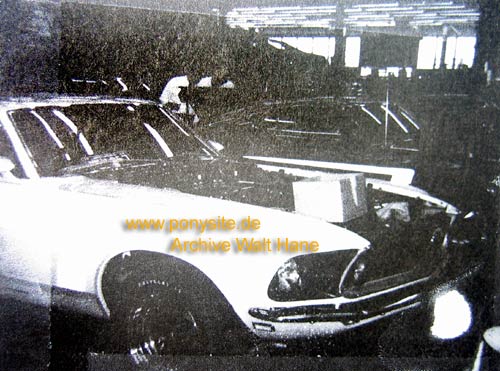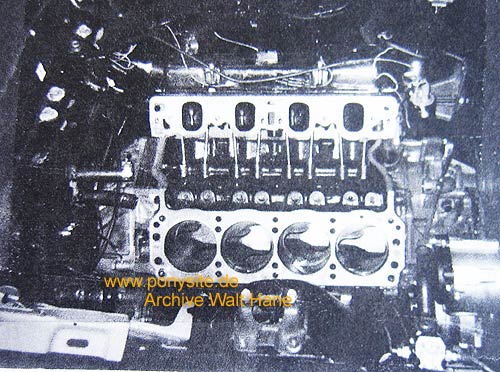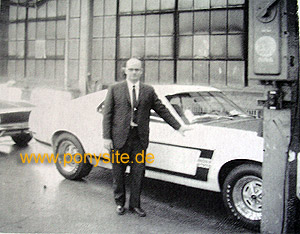
|
"It
was fun to see the Ford Dog and Pony Show"
"I
moved to Colorado in 1967. Then I bought a Sports Car Club of America (SCCA)
K Mustang A/S race car, which I still have. But, I wasn’t active in
racing except as an instructor then. The SCCA TransAm series had gotten
somewhat out of control in 1968. Jim
Patterson, working out of the National SCCA Office in Westport, Connecticut,
was trying to handle the Series Technical Inspection using local SCCA Tech
Inspectors at each race. When
the series came to Continental Divide Raceways at Castle Rock Colorado, Jim
was there trying to handle tech. He had a Mustang drop on his arm while he was
trying to check the front end. About that time, we met and discussed the
series. Looking to get involved somehow, I suggested that SCCA might consider
hiring me to straighten up the series in 1969. Needless to say, Jim was
agreeable. I sent them a proposal
for handling the series the next year. It was accepted and I was off to the
races. I
was based out of my home in Colorado. But I spent considerable time at the
national office, in early 1969, planning the technical end of the series. I
was responsible for writing rules and verifying production on American, over
two liter, car manufacturers. My task was to “cleanup the series”, but
make sure all the participants got to MIS in the Irish Hills in Michigan for
the first race. So
off I went to Michigan to the manufacturers to meet with the responsible
factory race people. American Motors wanted to run a hood scoop on their
Javelins to put over the two Holley Dominator carburetors. Ford had paid for
the development but AMC latched on to some of them. I believe they were very
low volume sand castings. None of the production cars had received any hood
scoops, as required by SCCA for use on the race cars. So I went with AMC guys
to a fiberglass shop in Allens Park to make sure they were building 500 hood
scoops. They sent those to unsuspecting Javelin owners around the country.
When
I went to Pontiac, I was told Jerry Titus had just preceded me. He had left
Ford, to join the Pontiac Race Team, because of the tunnel port engine
problems near the end of the 1968 season; He found out that Pontiac was
developing a new motor for the 1969 TransAm series. What he saw was a shocker
as it was another tunnel port engine all over again. And it didn’t work
either. I met with Herb Adams, the engineer in charge of the TransAm program. They had a line going to build the 500 engines to qualify for
TransAm. They had destroked and decked the 400 to make a 305 cid engine. But
the surface speed of the large diameter main bearings at high RPM was causing
oiling problems. And all of Herb’s trick oil plumbing didn’t really solve
the problem. So off to see Steve Malone, the Chief Engineer, we went. I
decided to let them run the Chevrolet 305, as in the Camaro. Since the team was sponsored by Terry Godsall from Canada, and Pontiac used those engines there, that was the reasoning. Anyway. It got them in the series with good engine potential.
As
soon as I showed up at Homer’s, we were off to pick up John Cowley,
Performance & Economy Manager, and head into Jacques Passino’s office.
He was the head of Ford’s Special Vehicles department. After meeting
Jacques, it was obvious he was the boss. His eyes were so penetrating that I
wanted to turn around to see if he was looking at some one right behind me. I
already knew they were serious about the Boss 302, but it was fun to see the
show, anyway. They were taking the cars off the assembly and running them
around and back down the line again. So, that night, I snuck into the Rouge
plant and checked to see how many Boss cars were really in the get ready lot.
Actually I found a number that didn’t have warm exhaust from multiple trips
down the assembly line. They
gave me a Boss car to drive that was right off the line. Roger Penske had
mentioned that Ford had only built one street tunnel port Mustang in 1968 for
the press to drive. So I took the Boss into the Dearborn Test, where I used to
work in the 50’s. At the Experimental garage, several technicians took the
engine out and took it apart for me to photograph. I have included these
photos along with some from the assembly line “D & P Show”.
The
loaner Boss was yellow and had the rear window slats. It really did turn heads.
I drove it up to Chevrolet to meet with Vince Piggins and his crew. Vince
suggested we leave the Boss for his guys to look at while we went to lunch at
a local fast food place. I think John Pierce & Bill Howell went with us.
After we came back, Vince’s guys gave me a list of the problem areas of the
Boss car. These included a missing front stabilizer link pin. It seemed to go
around corners pretty well, however, without it. After
leaving that session, I went out to the race shop outside of Philadelphia.
There, I met with my old friend, Mark Donohue. I had beaten him for the B/P
national championship in 1966 when we were both running Shelby GT350’s. We
had also spent time together during our first TransAm race event at Daytona in
February 1967. I remember he was
busy working on getting the first Penske Indy 500 car developed.
As we know, that paid off for him in 1972. We went through the TransAm
Camaro from one end to the other. He gave me a drawing of the Camaro cage. I
have given copies of this to many would be Camaro racers over the years.
After
all this and a few more on going challenges, the first TransAm race took place
in the Michigan Irish Hills at MIS with all of the interested manufacturers
represented. There was never a
dull moment at that event and all those thereafter. These included the Camaro
vinyl top incident & adjustable rear spoiler request. We must not forget the droop snoot Mustangs, of course. Who
would have ever guessed then, that 37 years later, I would be putting together
a Boss car with just such a device? It was an exciting time then. I am glad I
was a small part of it. Walt
Hane 05/09/06
|
E-Mail
Back to
the Trans Am Main page
Back to Homepage
